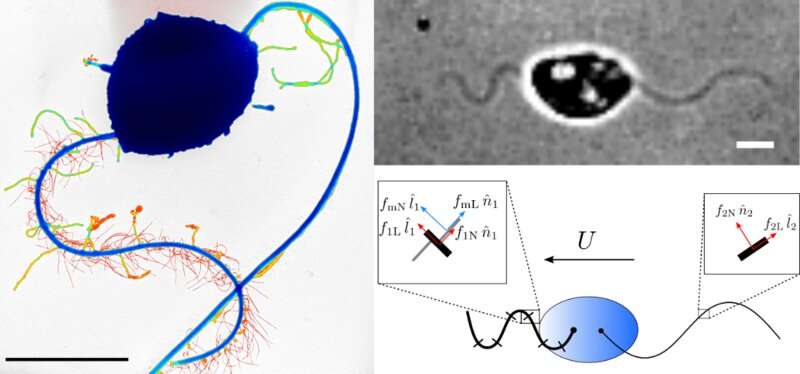How do water mold spores swim?

Oomycetes, also known as water molds, are pathogenic microorganisms that resemble fungi and are responsible for a group of diseases affecting several plant species. To reach and infect plants, the zoospores—i.e., self-propelled spores—of oomycetes swim to their target using two flagella, one opposite the other. In a recent study directed by a CNRS researcher, physicists and biologists worked together to precisely measure the movement of each flagellum while a zoospore follows a linear trajectory and when it is turning. They used these data to develop a theoretical model.
Their findings, published in eLife, reveal that in order for the zoospore to turn, its anterior flagellum ceases to beat sinusoidally, as it does when moving along a straight path, and instead adopts a breaststroke. This is the first time that the movement of such organisms has been described at a microscopic scale.
Beyond the fundamental biophysical questions the nature of their motion raises, zoospores represent a new model of "microswimmers" distinct from algae and bacteria, suggesting new avenues of physics research. Through these findings we now understand how oomycete zoospores move, but we still lack knowledge about when and why they change direction during their movement. In the future, the researchers would like to study the interactions between the zoospores and the roots they infect, in order to identify the chemical processes that attract these pathogenic microorganisms.
More information: Raymond E Goldstein, Editor's evaluation: Coordination of two opposite flagella allows high-speed swimming and active turning of individual zoospores, eLife (2022). DOI: 10.7554/eLife.71227.sa0
Journal information: eLife
Provided by CNRS




















